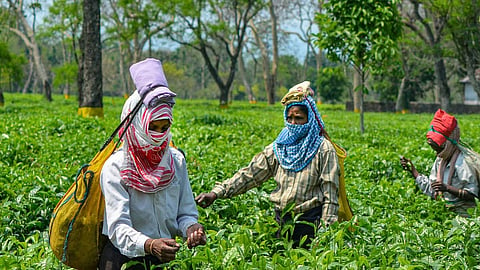
- Home
- Live Blog
- Breaking News
- Top Headlines
- Cities
- NE News
- Sentinel Media
- Sports
- Education
- Jobs

All is not well in Assam’s tea gardens. As reported prominently in the front page of the Sunday edition of this newspaper on the basis of a CAG report, of the 800-plus tea gardens in the state, as many as 176 do not have any healthcare facilities for their workers. The performance audit report of the CAG has also mentioned that teams visiting different tea-growing districts found hospitals in shambles in at least 26 tea gardens. While some tea garden hospitals had broken ceilings and cracked walls, the condition in the minor operation theatres, wards, and dressing rooms was found to be unhygienic, it said. The worst is that hospitals in 15 tea gardens also lacked drinking water facilities. If the CAG performance audit report is to be believed, eleven of the 26 garden hospitals the teams visited did not have full-time doctors. If some had visiting doctors who went to the tea gardens only on certain days of the week, six did not have any doctor at all. The worst is that no drugstore in any of the hospitals that the CAG teams visited had refrigerators for storage of temperature-sensitive drugs. While the history of Assam’s tea industry is inching towards completing two hundred years of its establishment, the fact remains that healthcare facilities for tea workers have always been very dissatisfactory and pathetic. Till about sixty or seventy years, labourers engaged in Assam’s tea gardens often lived in inhuman or sub-human conditions. While the mortality rate of labourers even during transit when they were imported from other parts of the subcontinent was very high, one report of the colonial era said that out of about 84,000 labourers imported to Assam between May 1863 and May 1866, at least 35,000 had either died after arrival, or had fled to escape death due to starvation and diseases. Another report of 1892, on the other hand, had put the death rate among tea labourers in Assam at ten percent per annum! While it is the responsibility of the tea garden management to ensure proper healthcare facilities for their workers, the ground reality was different. This can be gauged from the fact that the Government of Assam had to intervene, with the National Health Mission (NHM), Assam, providing financial assistance to 170 tea garden hospitals under PPP mode, apart from deploying 130 Mobile Medical Units (MMU) to cover the tea gardens. Additionally, the Government of Assam has also extended a Free Drugs Scheme to all tea garden hospitals in the past few years. Official reports also point at a high maternal mortality rate (MMR) and infant mortality rate (IMR) in Assam’s tea gardens. With Assam’s tea story completing 200 years, it is for the industry to meet the healthcare requirements of its workforce rather than looking towards the government.